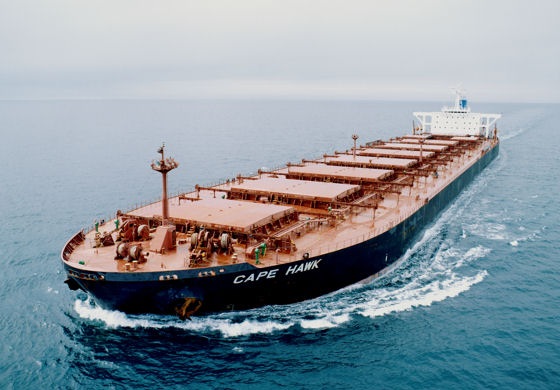The Panama Canal expansion has now been completed and so far it has made little difference to grain shipments, but it may lead to more US, Colombian and Canadian coal transiting through the canal, sources said.
The new neo-Panamax locks were officially opened at the end of last month and the expanded canal can now handle vessels up to 366 meters in length, 49 meter beam and a draft of 15.24 meters. This should allow “Baby-Cape” dry bulk vessels up to 130,000 dwt to pass through the canal, increasing the attractiveness of shipping a range of thermal and metallurgical coals crossing between the Atlantic and Pacific for destinations in Europe, the Far East, India and Brazil.
Previously the largest dry bulk cargo that could be taken through was 65,000 mt on Kamsarmax size vessels up to 80,000-85,000 dwt.
As well as fitting wider locks, a new pricing structure is in place for different commodities. However, this framework adds significantly to transit fees.
For grain cargoes the pre-existing Panamax canal locks add $2.75/mt onto 65,000 mt cargoes versus $3.36/mt through the neo-Panamax locks, a difference of 61 cents.
Grain interest around the canal’s expansion has been limited, while the risk is that higher fees for coal cargoes may limit the potential for miners, utilities and steel mills to fully utilize the expanded channel. At the moment, if charterers want to take larger grain stems of up 66,000 mt (plus/minus 10%) to China from the US Gulf, then they route cargoes via the Cape of Good Hope and avoid paying the Panama fees entirely. With current bunker prices, cargoes via this route are currently calculated at $1/mt less than cargoes via Panama, so there is no financial incentive to take larger stems thought the Panama Canal.
Most dry-bulk shippers believe that the new canal will largely be used by container vessels. According to an operator, “Post-Panamaxes can go through now, but Kamsarmaxes with grains are still using the old canal. You could see more US Gulf coal cargoes travelling on Baby-Capes through the new canal potentially.”
COKING COAL IMPORTERS
Coking coal importers in Europe and Brazil and miners have flagged interest in using larger vessels through the Panama Canal. The development may be of further strategic importance should reducing demand for imported coking coal in China materialize longer term.
Coal suppliers and buyers are optimistic that larger cargoes may help move market share away from Australian and US miners, which command a larger seaborne share, or help in negotiation of terms.
US coking coal exports are currently annualizing in the mid-30s million mt, while Canada’s exports are mainly led by miner Teck, which planned to sell 6.5 million mt in Q2 2016.
A source said it is still early to tell how cargo flow is managed through the enlarged canal and the extent dry bulk will be prioritized. There is competition for container flow and LNG vessels moving from the US Gulf to Asia to take into account, as well as coal exports from the US and Colombia moving into the Pacific on larger vessels against coal from Canada moving to the Atlantic.
In an environment of relatively low freight rates, benefits may be a fine-tuning of procurement around more flexible lead times for a range of coal grades, rather than cargo sizes necessarily directly reducing CFR-based costs, freight and coal trading sources said.
CANADIAN COKING COAL AND PCI
Western Canada has a number of idled coking coal and PCI mines, as well as several development projects waiting to proceed.
Canadian coal qualities may compete with premium Alabama coals and other brands or blends exported from US East Coast, where freight rates are trending closer together.
Comparing North American Panamax coal routes into Rotterdam, Hampton Roads is the closest main port to Europe and prices of $9/mt to Rotterdam compared with the Mobile route at $10.25/mt and Roberts Bank route via the canal for a Panamax at $11/mt, all assessed on July 17. This showed a contraction in usual wider price differentials for the voyages, using Platts data.
Mobile shipments priced at a 31% premium over Hampton Roads in similar coal voyages to Rotterdam over the first half of 2016, compared to a 28.3% premium in H1 2015, using monthly averages for the routes as assessed by Platts. Meanwhile, Roberts Bank priced at a 24% premium over Mobile in voyages to Rotterdam over H1 2016, down from a 36% premium seen in H1 2014.
The latest rates show Mobile at 14% over Hampton Roads, and Roberts Bank at 7.3% over Mobile, in the three ports’ voyages to the European hub.
The main beneficiaries of Panama Canal expansion are expected to be container vessels but it does offer new opportunities for Canadian coking coal miners and may enable them to compete more effectively with US and Australian suppliers.
–Peter Farrell, peter.farrell@spglobal.com
–Hector Forster, hector.forster@spglobal.com
–Edited by Alisdair Bowles, alisdair.bowles@spglobal.com
